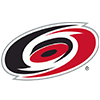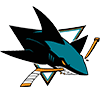While there are still three and a half weeks left in the 2022 season, it's fair to say that much of the baseball buzz in the past few days has been focused on 2023. That comes as the league announced some significant rule changes for next season despite the lack of support from the players:
- The shift has been effectively banned. Two infielders must be on either side of second base, and no infielder may stand on the outfield grass.
- A pitch clock has been implemented, with pitchers having 20 seconds to release the ball with runners on base and 15 seconds with the bases empty.
- Pitchers may step off the mound (including to throw a pickoff) only twice per plate appearance.
- The bases will be slightly bigger.
The announcement was met with more positivity than I expected, though that could be merely a function of the articles I happened to read and the Twitter accounts I happen to follow. Still, I had long thought that the shift ban in particular was something caught up in baseball's culture war, with old-school fans wanting a return to the defensive alignments of their youth and new-school fans happy to see the game evolve and to see creativity rewarded.
While I've seen positive responses to all four changes overall, my own thoughts are mixed, particularly on the subject of the shift ban. I get the desire to incentivize more balls in play. Having covered the KBO in 2020 and 2021, I spent a
While there are still three and a half weeks left in the 2022 season, it's fair to say that much of the baseball buzz in the past few days has been focused on 2023. That comes as the league announced some significant rule changes for next season despite the lack of support from the players:
- The shift has been effectively banned. Two infielders must be on either side of second base, and no infielder may stand on the outfield grass.
- A pitch clock has been implemented, with pitchers having 20 seconds to release the ball with runners on base and 15 seconds with the bases empty.
- Pitchers may step off the mound (including to throw a pickoff) only twice per plate appearance.
- The bases will be slightly bigger.
The announcement was met with more positivity than I expected, though that could be merely a function of the articles I happened to read and the Twitter accounts I happen to follow. Still, I had long thought that the shift ban in particular was something caught up in baseball's culture war, with old-school fans wanting a return to the defensive alignments of their youth and new-school fans happy to see the game evolve and to see creativity rewarded.
While I've seen positive responses to all four changes overall, my own thoughts are mixed, particularly on the subject of the shift ban. I get the desire to incentivize more balls in play. Having covered the KBO in 2020 and 2021, I spent a good deal of time watching a game that fit that description and certainly appreciated the fact that runs came frequently from rallies rather than just solo homers. On the other hand, I get active enjoyment from the weirdness that creative defensive alignments produce. Manny Machado catching a ball in foul territory up the right field line is enjoyable in and of itself. I enjoy that forward-thinking teams can be rewarded for thinking outside the box, and I was looking forward to finding out what odd alignment would pop up next.
I'm also pretty worried about the move backfiring and incentivizing player types that really aren't the most fun to watch. Mediocre sluggers who couldn't necessarily find work when they hit just .200 might get jobs again now that they can hit .220, but I'm not sure they make for the most entertaining baseball. On the opposite side, the fact that teams can no longer hide sub-par defenders as easily may create more jobs for all-glove, no-hit middle infielders. Those players are a boost for the defensive highlight GIF market, but I'm not sure if more Nicky Lopezes really makes for a better product.
I do think the faster pace of play provided by the pitch clock will be a positive, though it's hard to take efforts in that area seriously if they aren't paired with a push to shorten the ad breaks between innings, by far the biggest culprit in terms of both the length and pace of games. The clock could wind up curtailing extreme velocity, however, as the hardest throwers tend to need the most time between pitches. If that leads to a bit more contact, that's another positive.
An increase in steals due to the slightly shorter basepaths and the limit on pitchers throwing over seems like a very good thing, as everybody loves steals. It's possible the pickoff limitation combined with runners' ability to time the pitch clock turns things into a farce, but a year with a few too many steals probably wouldn't hurt.
Despite my misgivings about the league stifling creativity and doing so without approval from the players, I'm still very much hoping all the changes will have the desired effect. I'm not nearly as down on the modern game as many fans are, but I certainly wouldn't mind more steals and more singles. I'd be curious to hear your thoughts in the comments. For now, though, we'll switch our focus back to this season to look at a few players who have made noise in recent weeks.
RISERS
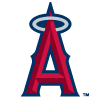 Mike Trout, OF, Angels: Remember this guy? While Trout's annual injury troubles may make it hard for him to live up to his draft-day price, he's doing everything he can to make any potential loss a small one. He's homered in each of his last six games, part of a 20-game stretch since his return from a rib injury in which he's hit .316/.372/.734 with 10 home runs. Despite the fact that he's been limited to just 99 games, his 34 homers tie him with teammate Shohei Ohtani for fifth in the league, and his career-best 20.2 percent barrel rate would rank third among qualified hitters. Selling out for more power appears to be a conscious choice for this stage of his career. After striking out no more than 20.4 percent of the time from 2016 through 2019, his strikeout rate jumped to 23.2 percent in 2020 and has now jumped above 28 percent in 2021 and 2022. That would be a red flag for many players, but all it seems to mean for Trout is that he's hitting .280 instead of .300.
Mike Trout, OF, Angels: Remember this guy? While Trout's annual injury troubles may make it hard for him to live up to his draft-day price, he's doing everything he can to make any potential loss a small one. He's homered in each of his last six games, part of a 20-game stretch since his return from a rib injury in which he's hit .316/.372/.734 with 10 home runs. Despite the fact that he's been limited to just 99 games, his 34 homers tie him with teammate Shohei Ohtani for fifth in the league, and his career-best 20.2 percent barrel rate would rank third among qualified hitters. Selling out for more power appears to be a conscious choice for this stage of his career. After striking out no more than 20.4 percent of the time from 2016 through 2019, his strikeout rate jumped to 23.2 percent in 2020 and has now jumped above 28 percent in 2021 and 2022. That would be a red flag for many players, but all it seems to mean for Trout is that he's hitting .280 instead of .300.
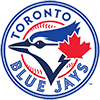 Bo Bichette, SS, Blue Jays: Speaking of first rounders who weren't pulling their weight until recently, Bichette has joined Trout in the category of elite players who are finally living up to their draft-day price. The young shortstop owned a forgettable .715 OPS as recently as August 20, but he's done an excellent job rewriting the story of his season since then. In 20 games since that date, he's homered six times and stolen a pair of bases while slashing .415/.473/.780. A .467 BABIP over that stretch certainly inflates his numbers somewhat, though Bichette deserves a fair bit of the credit for that number thanks to his speed and his excellent 59.1 percent hard-hit rate during that sample. It's going to end up as an imperfect season for Bichette, though he's jumped back up to 20th in our earned auction value rankings, a number that isn't all that far behind his NFBC ADP of 5.0. He may not go quite as high next year, especially as he's dropped from 25 steals to a modest nine this season, but he's no longer a bust.
Bo Bichette, SS, Blue Jays: Speaking of first rounders who weren't pulling their weight until recently, Bichette has joined Trout in the category of elite players who are finally living up to their draft-day price. The young shortstop owned a forgettable .715 OPS as recently as August 20, but he's done an excellent job rewriting the story of his season since then. In 20 games since that date, he's homered six times and stolen a pair of bases while slashing .415/.473/.780. A .467 BABIP over that stretch certainly inflates his numbers somewhat, though Bichette deserves a fair bit of the credit for that number thanks to his speed and his excellent 59.1 percent hard-hit rate during that sample. It's going to end up as an imperfect season for Bichette, though he's jumped back up to 20th in our earned auction value rankings, a number that isn't all that far behind his NFBC ADP of 5.0. He may not go quite as high next year, especially as he's dropped from 25 steals to a modest nine this season, but he's no longer a bust.
 Jordan Montgomery, SP, Cardinals: Montgomery is the latest in a long list of reminders of just how important a change in park factors can be for a player. The lefty was already having a solid season prior to his move from Yankee Stadium, posting a 3.69 ERA in 21 starts, but he's improved to an excellent 1.45 ERA in his first seven starts as a Cardinal. Six of those outings have come at Busch Stadium, one of the most pitcher-friendly parks in the league, but it would be a mistake to chalk his improvement up solely to park factors. He's also increased his strikeout rate from 20.7 percent to 23.2 percent while keeping his walk rate under five percent, something that may be attributable to his decision to throw more four-seamers and fewer sinkers. Moving away from the sinker makes his 10-point jump in groundball rate (up to 56.0 percent) hard to explain, however. Even if that mark tails off again, though, the improvement in park factors should keep Montgomery quite valuable down the stretch.
Jordan Montgomery, SP, Cardinals: Montgomery is the latest in a long list of reminders of just how important a change in park factors can be for a player. The lefty was already having a solid season prior to his move from Yankee Stadium, posting a 3.69 ERA in 21 starts, but he's improved to an excellent 1.45 ERA in his first seven starts as a Cardinal. Six of those outings have come at Busch Stadium, one of the most pitcher-friendly parks in the league, but it would be a mistake to chalk his improvement up solely to park factors. He's also increased his strikeout rate from 20.7 percent to 23.2 percent while keeping his walk rate under five percent, something that may be attributable to his decision to throw more four-seamers and fewer sinkers. Moving away from the sinker makes his 10-point jump in groundball rate (up to 56.0 percent) hard to explain, however. Even if that mark tails off again, though, the improvement in park factors should keep Montgomery quite valuable down the stretch.
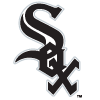 Lance Lynn, SP, White Sox: A knee injury kept Lynn off the field until mid-June, and his struggles upon his return suggested that the 35-year-old's time as anything resembling a frontline starter may be over. He stumbled to a 7.50 ERA over his first seven starts and remained inconsistent for his next handful of outings. He's been excellent over his last six outings, however, producing a 1.19 ERA and coming up just one out short of a run of six consecutive quality starts. He's struck out 31.3 percent of the batters he faced over that stretch while walking just 2.8 percent. Lynn had actually shown similarly strong command even during his early struggles, walking just 4.2 percent of opposing batters prior to his recent hot streak, but the strikeouts are new. Even peak Lynn wasn't running a 30 percent strikeout rate, as he topped out at 28.1 percent as a Ranger back in 2018. Fears of Lynn being over the hill now seem outdated, as his poor early run now looks like merely a sign that he wasn't yet fully healthy.
Lance Lynn, SP, White Sox: A knee injury kept Lynn off the field until mid-June, and his struggles upon his return suggested that the 35-year-old's time as anything resembling a frontline starter may be over. He stumbled to a 7.50 ERA over his first seven starts and remained inconsistent for his next handful of outings. He's been excellent over his last six outings, however, producing a 1.19 ERA and coming up just one out short of a run of six consecutive quality starts. He's struck out 31.3 percent of the batters he faced over that stretch while walking just 2.8 percent. Lynn had actually shown similarly strong command even during his early struggles, walking just 4.2 percent of opposing batters prior to his recent hot streak, but the strikeouts are new. Even peak Lynn wasn't running a 30 percent strikeout rate, as he topped out at 28.1 percent as a Ranger back in 2018. Fears of Lynn being over the hill now seem outdated, as his poor early run now looks like merely a sign that he wasn't yet fully healthy.
 Albert Pujols, 1B, Cardinals: It looked like little more than a nod to sentimentality when Pujols signed with the Cardinals over the winter. Sure, it was understandable that he'd want to play one more season in order to have a shot at 700 homers, but it would take 510 plate appearances to get him the 21 home runs he needed to reach that mark if he continued at the same pace he had for the last five seasons, and it was hard to say he deserved that much playing time considering that his last above-average season at the plate came back in 2016. As it turns out, it doesn't look like Pujols will wind up needing nearly that many to reach the milestone, as he's hit 18 homers in 287 plate appearances thus far; he'll need 48 more to reach 700 homers if he continues at that pace. That doesn't reflect the way he's been hitting lately, however, as 10 of his homers have come in the last month. Expect the Cardinals to give him every chance to reach 700, and expect him to keep swinging for the fences, making him a useful option for those needing a bit of power.
Albert Pujols, 1B, Cardinals: It looked like little more than a nod to sentimentality when Pujols signed with the Cardinals over the winter. Sure, it was understandable that he'd want to play one more season in order to have a shot at 700 homers, but it would take 510 plate appearances to get him the 21 home runs he needed to reach that mark if he continued at the same pace he had for the last five seasons, and it was hard to say he deserved that much playing time considering that his last above-average season at the plate came back in 2016. As it turns out, it doesn't look like Pujols will wind up needing nearly that many to reach the milestone, as he's hit 18 homers in 287 plate appearances thus far; he'll need 48 more to reach 700 homers if he continues at that pace. That doesn't reflect the way he's been hitting lately, however, as 10 of his homers have come in the last month. Expect the Cardinals to give him every chance to reach 700, and expect him to keep swinging for the fences, making him a useful option for those needing a bit of power.
 Oneil Cruz, SS, Pirates: Flashes of brilliance alongside frustrating stretches was more or less the expectation for Cruz this year once he eventually arrived, and that's largely been how his season has gone. His 36.4 percent strikeout rate leads only Joey Gallo among batters who have come to the plate at least 250 times, and he's paired that with a low 6.3 percent walk rate. Despite that worrying plate discipline, he's nonetheless managed a league-average 100 wRC+ and a stream of highlights featuring a diverse array of hardests, strongests and fastests. He's also seen an encouraging upward trend in his performance at the plate. Since August 28, he's hit .333/.368/.722 with four homers and 10 total extra-base hits in 13 games. He's also trimmed his strikeout rate to 29.8 percent over that stretch, a mark that remains hardly inspiring but still represents a meaningful step forward. Keeping his strikeout rate in the high 20s going forward will be the key if he's to develop into a star, as he can do just about everything else.
Oneil Cruz, SS, Pirates: Flashes of brilliance alongside frustrating stretches was more or less the expectation for Cruz this year once he eventually arrived, and that's largely been how his season has gone. His 36.4 percent strikeout rate leads only Joey Gallo among batters who have come to the plate at least 250 times, and he's paired that with a low 6.3 percent walk rate. Despite that worrying plate discipline, he's nonetheless managed a league-average 100 wRC+ and a stream of highlights featuring a diverse array of hardests, strongests and fastests. He's also seen an encouraging upward trend in his performance at the plate. Since August 28, he's hit .333/.368/.722 with four homers and 10 total extra-base hits in 13 games. He's also trimmed his strikeout rate to 29.8 percent over that stretch, a mark that remains hardly inspiring but still represents a meaningful step forward. Keeping his strikeout rate in the high 20s going forward will be the key if he's to develop into a star, as he can do just about everything else.
FALLERS
 Frankie Montas, SP, Yankees: Montas sitting in the Fallers section after Jordan Montgomery was featured as a Riser doesn't paint the best picture of the Yankees' trade deadline. He looked like a very worthy trade target after posting a 3.18 ERA through 19 starts with the Athletics, but he's slumped to a 5.94 ERA through his first seven trips to the mound as a Yankee. As with Montgomery, a big change in park factors is part of the story here, but he's also seen a meaningful decline in his performance. Specifically, his strikeout rate has collapsed to 18.6 percent, well below his 25.8 percent mark from before the trade as well as his career 24.4 percent strikeout rate. The good news there is that he hasn't had any notable changes in his velocity or pitch mix, and batters are actually chasing his pitches slightly more. Leaving Sean Murphy likely didn't help, though Yankee catcher Jose Trevino has a strong defensive reputation as well, so it's possible the whiffs could return soon.
Frankie Montas, SP, Yankees: Montas sitting in the Fallers section after Jordan Montgomery was featured as a Riser doesn't paint the best picture of the Yankees' trade deadline. He looked like a very worthy trade target after posting a 3.18 ERA through 19 starts with the Athletics, but he's slumped to a 5.94 ERA through his first seven trips to the mound as a Yankee. As with Montgomery, a big change in park factors is part of the story here, but he's also seen a meaningful decline in his performance. Specifically, his strikeout rate has collapsed to 18.6 percent, well below his 25.8 percent mark from before the trade as well as his career 24.4 percent strikeout rate. The good news there is that he hasn't had any notable changes in his velocity or pitch mix, and batters are actually chasing his pitches slightly more. Leaving Sean Murphy likely didn't help, though Yankee catcher Jose Trevino has a strong defensive reputation as well, so it's possible the whiffs could return soon.
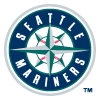 Mitch Haniger, OF, Mariners: As recently as August 28, Haniger owned an .835 OPS. That figure now sits at just .687. Granted, the fact that injuries have limited him to 41 games this season means that doesn't denote quite as dramatic a slump as it might seem at first, but it's definitely been a discouraging run for the outfielder. Over his 14-game slump, he's hit just .143/.210/.196, striking out 18 times to go with just four walks. A .205 BABIP suggests a fair amount of bad luck, but he's also managed a poor 28.6 percent hard-hit rate. Pair that mark with a high 22.4-degree average launch angle and you get a lot of pop-outs and weak flyballs, and not a lot of hits. To make matters worse, Haniger left Sunday's game against Atlanta with lower-back tightness. While there's been no indication as of this writing that the injury is a serious one, Haniger doesn't have the health track record to deserve the benefit of the doubt. The Mariners won't want to take any chances as they look to end the league's longest playoff drought, so they could turn to any of their large number of alternatives in the outfield if Haniger isn't 100 percent.
Mitch Haniger, OF, Mariners: As recently as August 28, Haniger owned an .835 OPS. That figure now sits at just .687. Granted, the fact that injuries have limited him to 41 games this season means that doesn't denote quite as dramatic a slump as it might seem at first, but it's definitely been a discouraging run for the outfielder. Over his 14-game slump, he's hit just .143/.210/.196, striking out 18 times to go with just four walks. A .205 BABIP suggests a fair amount of bad luck, but he's also managed a poor 28.6 percent hard-hit rate. Pair that mark with a high 22.4-degree average launch angle and you get a lot of pop-outs and weak flyballs, and not a lot of hits. To make matters worse, Haniger left Sunday's game against Atlanta with lower-back tightness. While there's been no indication as of this writing that the injury is a serious one, Haniger doesn't have the health track record to deserve the benefit of the doubt. The Mariners won't want to take any chances as they look to end the league's longest playoff drought, so they could turn to any of their large number of alternatives in the outfield if Haniger isn't 100 percent.
 Aaron Ashby, SP, Brewers: Pitchers who get hurt at this time of year don't always have time to build back up as a starter, instead spending the final few weeks of the season pitching out of the bullpen. Ashby recently became the latest such case, with the Brewers announcing over the weekend that he'd return from his shoulder injury in a bullpen role. He hasn't been out for long, only hitting the injured list in late August, but Milwaukee has evidently decided it's better to get him back for several appearances as a reliever rather than just one or two as a starter. Unfortunately for fantasy players in most formats, that means Ashby's fantasy value for this season has evaporated, as he's unlikely to see save chances and isn't nearly dominant enough to be interesting as a multi-inning reliever. All the ERA estimators agree that he's a good deal better than his 4.58 ERA, but while his 27.1 percent strikeout rate is strong, there are almost certainly more proven relievers out there even if you're forced to turn to someone in that category.
Aaron Ashby, SP, Brewers: Pitchers who get hurt at this time of year don't always have time to build back up as a starter, instead spending the final few weeks of the season pitching out of the bullpen. Ashby recently became the latest such case, with the Brewers announcing over the weekend that he'd return from his shoulder injury in a bullpen role. He hasn't been out for long, only hitting the injured list in late August, but Milwaukee has evidently decided it's better to get him back for several appearances as a reliever rather than just one or two as a starter. Unfortunately for fantasy players in most formats, that means Ashby's fantasy value for this season has evaporated, as he's unlikely to see save chances and isn't nearly dominant enough to be interesting as a multi-inning reliever. All the ERA estimators agree that he's a good deal better than his 4.58 ERA, but while his 27.1 percent strikeout rate is strong, there are almost certainly more proven relievers out there even if you're forced to turn to someone in that category.
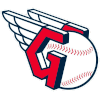 Amed Rosario, SS, Guardians: Rosario fits into a category of player who's often hard to evaluate from a fantasy perspective, as he's not a total zero anywhere but lacks a standout skill. He fits broadly into the speed-and-contact archetype, but neither his 13 steals nor his .275 average really stand out. That leaves him particularly useless when he falls into a slump like he has in recent weeks. Arguably Rosario's biggest weakness is his lack of patience at the plate (though his low walk rate could also reflect opposing pitchers' lack of fear of his bat). That's stood out in a particularly notable way recently, as he hasn't worked a single walk in his last 16 games. He's struck out 18 times since his last free pass (a 25.4 percent strikeout rate) and has hit just .217/.225/.275 over that stretch. He's been particularly damaging in OBP leagues, though not getting on base also means he can't score, as he's crossed the plate just five times during his current slump.
Amed Rosario, SS, Guardians: Rosario fits into a category of player who's often hard to evaluate from a fantasy perspective, as he's not a total zero anywhere but lacks a standout skill. He fits broadly into the speed-and-contact archetype, but neither his 13 steals nor his .275 average really stand out. That leaves him particularly useless when he falls into a slump like he has in recent weeks. Arguably Rosario's biggest weakness is his lack of patience at the plate (though his low walk rate could also reflect opposing pitchers' lack of fear of his bat). That's stood out in a particularly notable way recently, as he hasn't worked a single walk in his last 16 games. He's struck out 18 times since his last free pass (a 25.4 percent strikeout rate) and has hit just .217/.225/.275 over that stretch. He's been particularly damaging in OBP leagues, though not getting on base also means he can't score, as he's crossed the plate just five times during his current slump.






















